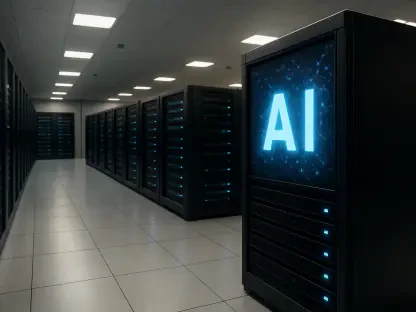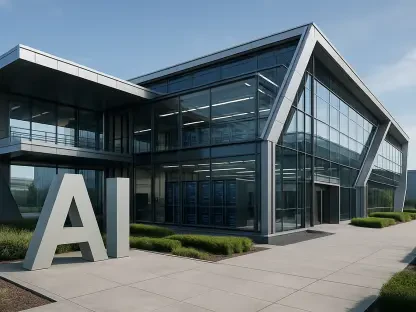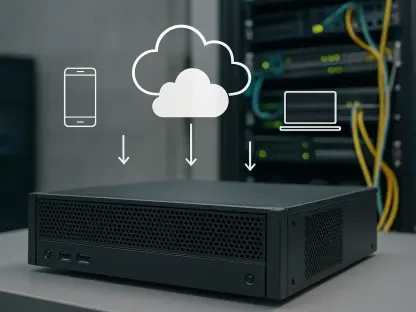The article discusses a transformative opportunity in networking and IT that targets expanding services to the 40% of the workforce not currently operating in traditional offices. This missing demographic, crucial to commercial activity but often overlooked, includes workers in roles such as truck driving, box pushing, and valve turning. Empowering this group could lead to significant advances in IT spending, benefiting both vendors and enterprises by providing new applications, skills to develop, and technologies to exploit.
The Untapped Potential
Starting in 2025, there’s a call for network vendors to identify and work on new applications that deliver solid business benefits and pave the way for genuine network transformation. Most IT benefits stem from empowering workers, and to amplify these benefits, the industry must focus either on enhancing the productivity of the current tech-savvy workforce or on reaching out to the overlooked 40%. This shift has the potential to unleash an unprecedented wave of IT growth, far surpassing previous periods. One key challenge in extending empowerment lies in the lack of information about these workers and their operations.
This particular segment of the workforce operates outside the traditional data-rich environments of office cubicles and static workstations. These roles involve physical tasks that don’t generate streams of digital information but are nonetheless critical to the daily operations of countless businesses. Bridging this gap requires innovative solutions that leverage real-world data collection and advanced analytics to enhance productivity and streamline processes. By tapping into the largely unexplored potential of these employees, the IT sector stands on the cusp of a significant transformation that could redefine the boundaries of current technological applications.
Bridging the Information Gap
Unlike their office-based counterparts, these employees aren’t involved in data-intensive tasks but are integral to physically-driven processes. To bridge this gap, it’s essential to gather detailed real-world data through IoT (Internet of Things) devices and advanced processing power to analyze the resulting data avalanche. The task at hand is to capture and interpret data from the field accurately, translating it into actionable insights that can drive productivity and efficiency across various sectors.
Two companies, Ericsson and Nokia, are spotlighted for their efforts in this arena, each with a unique approach to integrating IoT for beneficial outcomes. Ericsson, primarily known for its telecom infrastructure, is venturing into IoT. Employing a combination of partners specializing in middleware, network protocols for event information exchange, and secure connections for IoT devices, Ericsson aims to deploy widespread sensors to capture real-world conditions. By doing so, they intend to paint a comprehensive picture of the environments in which these overlooked workers operate, ultimately leading to more effective and efficient work processes.
Ericsson’s IoT Ambitions
Ericsson’s strategy involves collaborating with specialists in middleware and secure IoT connections to develop robust applications tailored to this segment of the workforce. Partnering with experts in event information exchange protocols, the company is positioning itself as a frontrunner in the deployment of IoT sensors and the interpretation of their data. The goal is to create applications that not only gather data but also provide meaningful insights that can be directly applied to enhance productivity and streamline operations for the missing 40%.
Their approach focuses on laying the groundwork necessary to gather and analyze data from IoT devices. By deploying sensors that monitor various environmental conditions and operational parameters, Ericsson aims to provide actionable insights that can transform how these workers conduct their tasks. However, the extent of Ericsson’s commitment to promoting these applications remains somewhat ambiguous at this stage. It is clear that the company sees significant potential in this area, but it remains to be seen how they will fully leverage their foundational elements to drive practical benefits for the workforce.
Nokia’s Digital Twin Approach
On the other hand, Nokia focuses on leveraging digital twins, which are computer models of real-world systems designed to gather and interpret data from IoT devices in context. These digital replicas serve to model and simulate complex processes, offering a coherent understanding of intricate operations. By utilizing digital twins, Nokia translates raw data into a structured and meaningful format that can be used to drive informed decision-making and enhance overall mission execution.
While a digital twin isn’t a direct application in and of itself, it provides an architecture upon which practical applications can be built. Nokia’s approach offers a more straightforward starting point for development than that of Ericsson, but it too hasn’t explicitly tied its work to the empowerment of the missing 40%. Nevertheless, the potential for digital twins to substantially impact the productivity and efficiency of this segment of the workforce is considerable, providing a solid foundation upon which further innovation can be built.
Nokia’s strategy is to employ digital twins to create detailed models of real-world environments and processes, allowing for the accurate interpretation of data collected by IoT devices. This method enables a clearer understanding of the conditions and challenges faced by these workers, paving the way for more targeted and effective applications. While Nokia hasn’t explicitly linked its work to the empowerment of this overlooked workforce, the architectural framework it provides offers a promising starting point for future developments.
Technological Integration
Several technologies are cited as instrumental in addressing these challenges. IoT allows for real-world quantification, while AI and video analysis offer applications the ability to observe worker activities. AR/VR glasses can further enhance this by overlaying crucial information and guiding worker movements. The essential point is that overcoming the challenges in integrating these technologies directly into work processes is more complex than merely managing work outcomes or planning directives.
Advanced technologies such as AI, AR/VR, and IoT have the potential to revolutionize the way manual labor tasks are performed, but their integration needs to be seamless and complementary to existing workflows. The challenges presented by incorporating these technologies into daily work routines are nontrivial, yet not insurmountable. Industry leaders must approach this integration with a holistic vision that ensures the technologies complement one another and enhance overall productivity.
However, existing technology appears equipped to meet these challenges if approached with a comprehensive strategy. By leveraging a multifaceted approach that combines data collection, advanced analytics, and immersive technologies, companies can create a synergistic environment that empowers workers and drives significant gains in productivity. As these technologies continue to evolve, their potential to transform the overlooked 40% of the workforce becomes increasingly achievable, offering a glimpse into a future where technology and manual labor intersect to generate unprecedented growth and efficiency.
Learning from History
Reflecting on historical trends in network and IT advancements, the piece highlights that Cisco’s dominance began with addressing a specific need: an open, multi-vendor approach to networking as computer vendors proliferated. Today’s challenge involves integrating multiple advanced technologies—AI, digital twins, IoT, AR/VR, robots—into a cohesive system targeting the missing 40%. The industry needs to draw on lessons from the past, where addressing clear, unmet needs led to significant breakthroughs and growth.
The article contemplates which vendors among the industry giants are positioned to successfully piece together this complex puzzle, suggesting that an ability to narrate a compelling vision and generate market excitement will be decisive. Just as Cisco capitalized on the need for interoperability and open standards, modern network vendors must present a unified vision that communicates the transformative potential of integrated technologies to enhance productivity for the overlooked workforce.
By examining historical precedents, the industry can gain valuable insights into how to approach current challenges. The success of past initiatives was often driven by a clear understanding of the needs and pain points of the target audience. Similarly, today’s vendors must adopt a customer-centric approach, focusing on the unique requirements of the missing 40% and developing tailored solutions that address their specific challenges. By doing so, they can unlock new opportunities for growth and innovation in the IT sector.
The Importance of Vision
The article highlights a transformative opportunity in networking and IT aimed at expanding services to the 40% of the workforce not currently working in traditional office settings. This overlooked segment includes essential workers like truck drivers, warehouse employees, and factory operators, who are vital to commercial activities yet frequently neglected. Empowering this group with advanced IT solutions could trigger substantial growth in IT spending. By catering to this demographic, vendors and enterprises could unlock new applications, cultivate necessary skills, and utilize cutting-edge technologies. This expansion not only benefits the workers by improving their efficiency and job satisfaction but also opens up new markets and revenue streams for the IT sector, making it a win-win situation for everyone involved. As IT becomes increasingly integral to all types of work environments, including non-traditional ones, both businesses and the broader economy stand to gain significantly from this inclusive approach.









